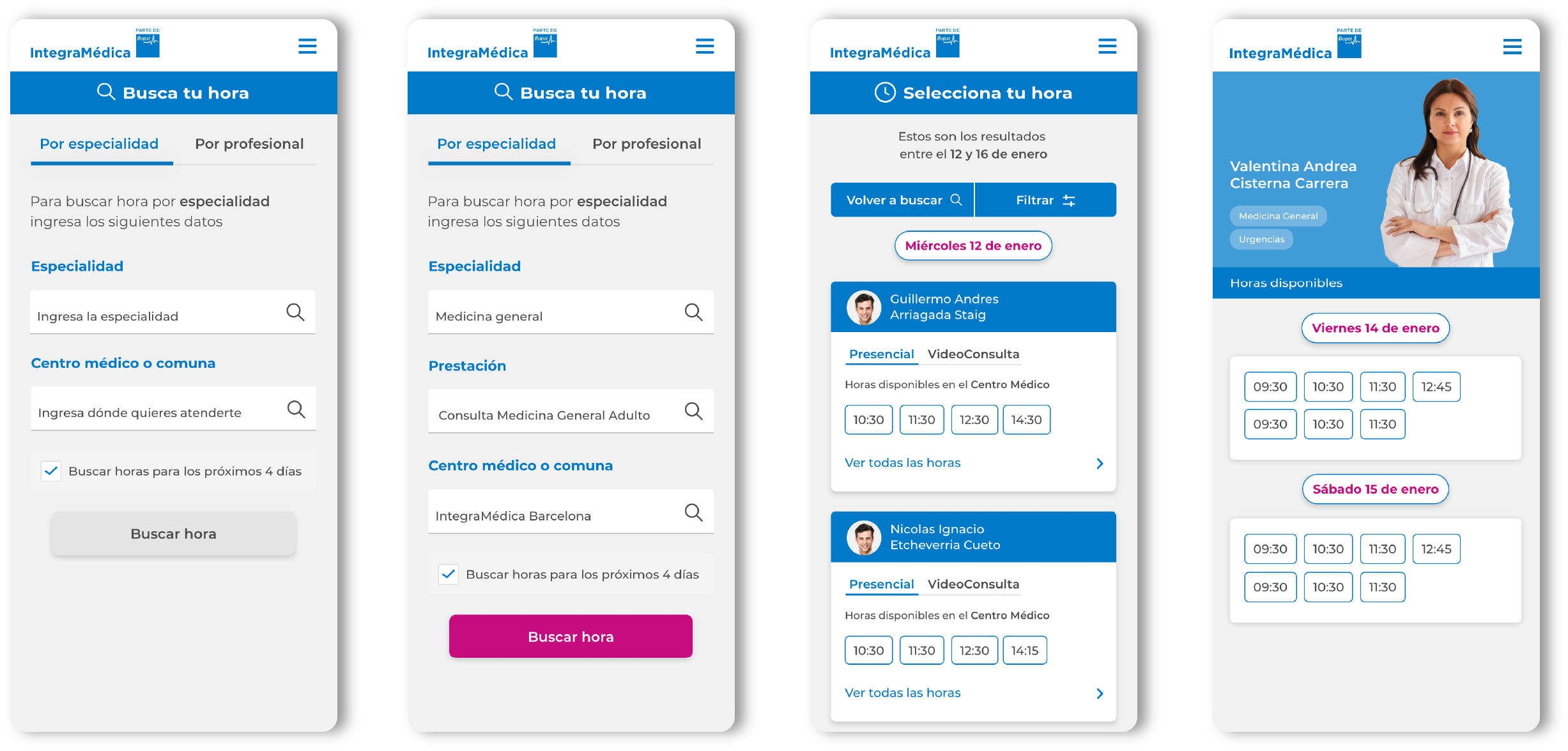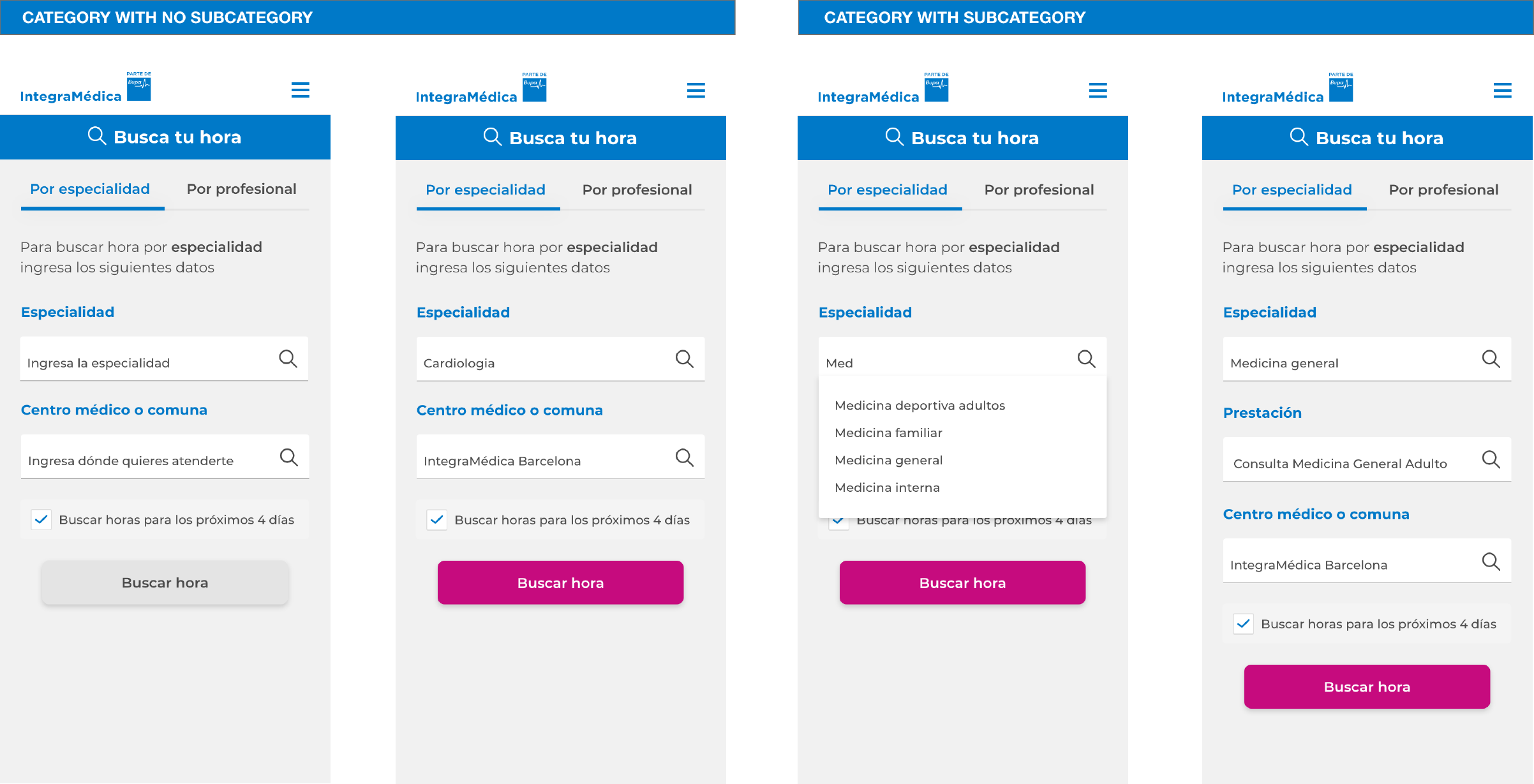Jean Staig
A/B Testing: Optimizing Online Booking Conversion

This project focused on Conversion Rate Optimization (CRO) for the critical online appointment booking flow at Bupa Chile (Integramédica and Clínicas Bupa brands). I led the design and testing strategy, navigating significant technical constraints and high business sensitivity. Through rigorous metric analysis and the implementation of a controlled A/B Test, we achieved a 1 percentage point increase in the funnel's conversion rate, clearly demonstrating the direct impact of strategic UX changes on business performance.
The Challenge and Opportunity
Online appointment booking is the operational and revenue core for Bupa Chile's brands. We identified that, despite high traffic, the booking funnel presented significant friction, resulting in a low conversion rate (high drop-off).
- Business Problem
- Low Conversion: Loss of users and revenue at each step of the booking process.
- Lack of Impact Clarity: Internal teams were unsure about the real business value of UX modifications.
- Design / UX Problem
- Unnecessary Friction: The existing flow required users to make redundant choices and view excessive options.
- A data-driven approach was necessary to validate any change.
- Key Constraint
- Inability to modify the backend logic (the core programming) of the scheduling system. Changes had to be purely front-end and flow-based.
- A method for fast, controlled validation (A/B testing) was required to avoid affecting daily operations.
My Role, Focus, and Accountability
My Role: Design leader (UX/UI) and CRO strategy.
My Core Responsibility: Defining the improvement hypothesis, analyzing the data to pinpoint pain points, and directing the design of the test solution (Variant B).
Team: I collaborated closely with a UX writer, developers (for test implementation), and product managers/owners (to align on business impact).

* Available schedule details
Analysis Process and Hypothesis Definition
Given the development restrictions, my focus was on surgical optimization based on data analysis:
Funnel analysis (drop-off identification): I personally analyzed traffic and drop-off metrics at each stage of the funnel (using Google Analytics and/or CRO tools). This allowed me to identify the most critical drop-off points and decisions with the highest abandonment rates.
Flow mapping and constraints: The UX team mapped the existing journey (Variant A) and the technical limitations to visualize where the principle of "lazy decision-making" could be applied—i.e., reducing the cognitive load.
Design Hypothesis:
"By proactively reducing the number of interactions and eliminating redundant options at critical funnel stages, we will increase the perceived flow and, consequently, the Conversion Rate."
The Solution (Variant B)
The solution focused on applying simplicity by default at the critical points defined by the data.
- Elimination of Redundant Steps: We implemented simple conditional logic on the front-end. For instance, if the category selected by the user (e.g., Specialties) yielded only one subcategory (e.g., Pediatrics), that subcategory was automatically selected, skipping a step and reducing the need for a click and visual load.
- Copy Clarity and Visual Hierarchy: The copy (text) on Call-to-Actions (CTAs) and step titles was revised to ensure instant comprehension, mitigating ambiguity and doubt.
- Usability Improvements: Visual hierarchy adjustments were made to guide the user's eye toward the next logical action.

Implementation, Validation, and Results
To mitigate risk to daily operations, a strict A/B test was designed and implemented:
- Test configuration: For a set period, 20% of the total traffic in the booking flow was diverted to Variant B (the optimized design), while the remaining 80% continued using Variant A (the original design).
- Key outcome: Variant B outperformed variant A, resulting in a net improvement of 1 percentage point in the overall conversion rate (CVR) of the funnel.
- Business impact: This increase, while a small percentage, translates into thousands of additional bookings per month and a direct, significant impact on the revenue and operational efficiency of both brands (Integramédica and Clínicas Bupa).
This result provided the solid quantitative evidence needed for the solution to be permanently and quickly implemented organization-wide, earning the trust of business stakeholders.

Learnings and Product Reflections
- The power of constraints: Working under severe technical limitations (inability to touch the backend) sharpened the focus on pure UX/Front-End optimization. It proved that data-driven, incremental improvements can generate high value without major development investment.
- CRO as a design tool: This case underscores that UX design, when coupled with CRO strategy, becomes a revenue-generating function. A/B testing is not just a metric; it is the clearest way to validate the value of design hypotheses.
- Simplicity drives conversion: The main takeaway was that reducing cognitive and interaction load—the simple act of eliminating a redundant option—is often the most potent solution for friction.